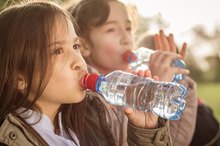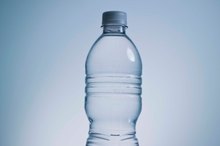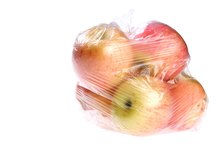Chemicals in Sanitary Pads
The chemicals used in sanitary pads, tampons and diapers raised concerns throughout the world -- particularly near the turn of the 21st century -- due to questions about the safety of certain chemicals used in their manufacture, as well as the environmental issues of disposing of them. Because of potential risk factors, some women have opted for organic sanitary pads as an alternative and others have decided to use reusable sanitary pads.
Dioxin
A bill introduced in Congress in March 1999 by Representative Carolyn Maloney of the 14th District of New York -- the Tampon Safety and Research Act of 1999 (HR 890) -- noted that “dioxin is a byproduct of chlorine-beaching processes used in the manufacture of paper products, including tampons, sanitary pads, panty liners and diapers.” HR 890 further pointed out that the effects of dioxin are cumulative and that the chemical may stay in the body for 20 years after exposure 36. Unfortunately the bill died in committee.
The World Health Organization lists dioxin as one of the “dirty dozen -- a group of dangerous chemicals known as persistent organic pollutants." Dioxin is a known human carcinogen 4. The Environmental Protection Agency has studied dioxin, however, and indicated that the largest problem with dioxin is from food, not tampons or sanitary pads. A study published by the EPA in 2002 states that exposure to dioxins from sanitary products "does not significantly contribute to dioxin exposures in the United States.”
- A bill introduced in Congress in March 1999 by Representative Carolyn Maloney of the 14th District of New York -- the Tampon Safety and Research Act of 1999 (HR 890) -- noted that “dioxin is a byproduct of chlorine-beaching processes used in the manufacture of paper products, including tampons, sanitary pads, panty liners and diapers.” HR 890 further pointed out that the effects of dioxin are cumulative and that the chemical may stay in the body for 20 years after exposure 3.
Other Chemicals
What Are the Side Effects of Parabens?
Learn More
A close relative of dioxin, furan, is also found in bleached paper products, including sanitary pads, diapers and tampons 2. Research published in the Textile Research Journal in 2007 extracted the chemicals found in sanitary pads and tampons throughout the world 2. While results varied among products, octachlorinated dioxin (OCDD), hexachlorodibenzofuran (HxCDF) and octa-chlorodibenzofuran (OCDF) were detected. These are all banned toxic substances.
Recommendations
Several times over the last few years -- in 2003, 2005 and 2008 when it died in committee, and most recently in 2011 -- Representative Maloney has introduced the Robin Danielson Act. This legislation directs the Institute of Health “to research health risks to women—including endometriosis and cancers of the breast, ovaries, and cervix—from the presence of dioxin, synthetic fibers, and other additives in feminine products.”
Related Articles
References
- CMAJ JAMC: Contact Dermatitis Associated With the Use of Always Sanitary Napkins
- Textile Research Journal: Analysis of Polychlorinated Dibenzo-p-dioxins and Dibenzo-furans in Sanitary Products of Women
- Pub Med: Exposure Assessment to Dioxins from the Use of Tampons and Diapers
- World Health Organization: Dioxins and Their Effects on Human Health
- Endometriosis Association: Endometriosis & Dioxins
- GovTrack.us: Tampon Safety and Research Act of 1999
- GovTrack.us: H.R. 2332 (112th): Robin Danielson Act
- U.S. Food & Drug Administration. The Facts on Tampons—and How to Use Them Safely. Updated September 12, 2018.
- Vostral S. Toxic shock syndrome, tampons and laboratory standard-setting. CMAJ. 2017 May 23;189(20):E726-E728. doi:10.1503/cmaj.161479
- U.S. Food & Drug Administration. Menstrual Tampons and Pads: Information for Premarket Notification Submissions (510(k)s) - Guidance for Industry and FDA Staff. Published July 2005.
- Jacquemond I, Muggeo A, Lamblin G, et al. Complex ecological interactions of Staphylococcus aureus in tampons during menstruation. Sci Rep. 2018;8(1):9942. doi:10.1038/s41598-018-28116-3
- Vostral S. Toxic shock syndrome, tampons and laboratory standard-setting. CMAJ. 2017;189(20):E726‐E728. doi:10.1503/cmaj.161479
- Genetic and Rare Diseases Information Center (GARD). Staphylococcal toxic shock syndrome. Updated November 4, 2015.
Writer Bio
Lynn Farris has been conducting management studies, writing technical articles and contributing to local newspapers since 1984. Having traveled throughout the world, Farris now lives in Costa Rica, teaches English and writes a column for the "National Examiner" on Costa Rica. Farris holds a Master of Business Administration and Bachelor of Arts in speech communications and psychology from Case Western Reserve University.









